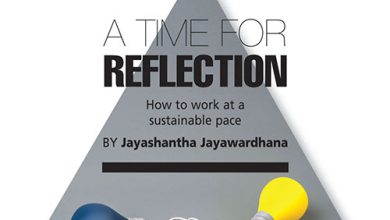EDUCATING SRI LANKA
TRUNCATED TEACHING
Goolbai Gunasekara moots streamlining schooltimes
A long teaching career has meant that my retirement has resulted in the delightful ability to sleep late. This is a luxury that Sri Lankan teachers can’t indulge in since most schools open at around 7.30 a.m. or thereabouts and they have to rise up very early in the morning.
Early rising is a good idea in any country that is hot for most of the year and where early-morning hours are the coolest time of the day. Finding a way to juggle these times of pleasantness to best suit the schoolchild has been a vexatious problem for a very long time.
In the 1930s, the British ruled Ceylon and schooltimes were arranged to benefit as many students as possible. The British were a practical people and as there was no compulsory free education at that time, schooling populations were small and easily organised.
With typical colonial efficiency (no one doubts that they were excellent administrators), the three terms of the school year were arranged to suit landowners and farmers in the country. And the times of sowing and harvesting during the Yala and Maha seasons were considered when fixing school terms.
Afternoon classes were the norm. School began at around 8 o’clock in the morning. A one hour break for lunch enabled most of us to go home and return to school in time for the afternoon session – during which many of us happily fell asleep in class.
Almost 95 percent of students attending private schools lived within walking distance of the schools they attended. Many cycled to school and a few were driven. The districts had many excellently run private schools and there was no need for students to rush to Colombo to obtain a good education.
Of course, this was elitism; and it was soon crushed by the new system, which eliminated much that was good in education. But it also ushered in plenty that enabled all children to gain an education. Whether the standards were maintained or not isn’t the purpose of this article since we are discussing timing here.
Today, getting to and from school is a problem for many. School buses abound but children and their parents have to deal with after-school activity such as sports practice, extracurricular activities and (worst of all) tuition classes, which are considered indispensable to aspiring scholars – especially in government schools.
Even parents who have cars and drivers face parking problems, heavy traffic, street closures during schooltimes and the poor state of many roads.
So one wonders whether school timings should be thought out carefully and a different timetable considered. This timetable could differ from city to city, district to district or even province to province; but the ultimate aim should be to make times of learning as easy as possible for everyone concerned.
We don’t need five to six hours of academic instruction each day. Four hours of concentrated work is adequate, and this too should be divided into subjects that take cognisance of right brain activity (such as music, art and drama) and left brain activity that’s geared to academics.
I have no doubt that good teachers will educate children as well as they do now, if they’re given shorter periods of time for each subject.
As a principal, I did daily walks in the school and often found that the last 10 minutes saw a flagging of both the children’s attention and teacher’s stamina. This was particularly noticeable up to about Grade 8. Our brains can’t absorb too much at any given time and what happens is that half the class simply stops paying attention.
A few school principals including my mother Clara Motwani pressured the Department of Education in 1955 or so to reduce school hours to only one session instead of the operative two sessions. It was done. Now I feel we need to further evaluate the timing issue.
Many factors necessitate this. Increased population has resulted in heavy traffic and climate change should be considered too. Even though syllabuses are much more extensive these days and the textbooks heavier, I still believe that four hours of academic teaching a day is sufficient.
Students in Finland are in school for quite a long time during the day. Homework and sports are done in school. By all means, let there be a lunch break and all the extracurricular activities thereafter. The afternoon session should be a reinforcement of the day’s study. I never felt sleepy in school if the afternoon session included art and singing.
The fact remains that I don’t have an answer but an expert will… because there are answers to all our educational problems if we seek them. Dr. Tara de Mel would add the observance of mindfulness to the early morning regimen of a student for an inspirational start to the day.
So with new political beginnings, may we one day soon have a fine education system!








